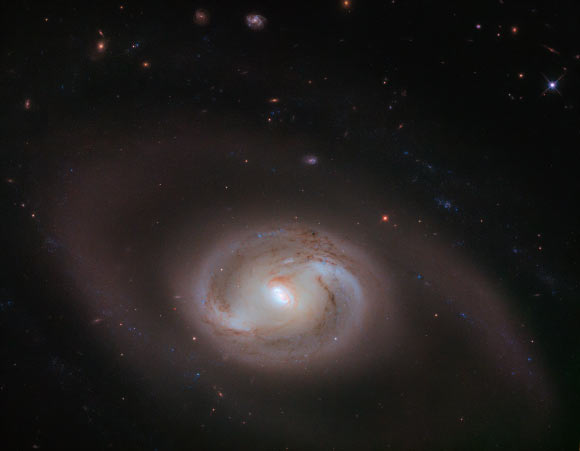Hubble Space Telescope Spots Multiring Galaxy | Astronomy – Sci-News.com
The NASA/ESA Hubble Space Telescope has produced an outstanding image of a spiral galaxy called NGC 2273.

This Hubble image shows the spiral galaxy NGC 2273. The color image was made from separate exposures taken in the visible and infrared regions of the spectrum with Hubble’s Wide Field Camera 3 (WFC3). It is based on data obtained through five filters. The color results from assigning different hues to each monochromatic image associated with an individual filter. Image credit: NASA / ESA / Hubble / J. Greene.
NGC 2273 is located about 93.6 million light-years away in the constellation of Lynx.
Also known as LEDA 19688, Mrk 620 and UGC 3546, the galaxy has a diameter of 100,000 light-years.
Discovered by the Swedish astronomer Nils Christoffer Dunér on September 15, 1867, NGC 2273 is the brightest galaxy in a galaxy group known as the NGC 2273 group.
“At first glance, NGC 2273 looks to be a simple spiral galaxy, with two pinwheeling arms emerging from a central bar of stars and material that cuts through the galactic center,” Hubble astronomers said.
“In fact, there are rings within these spiral arms, too: spirals within a spiral.”
“This kind of morphology is known as a multiring structure.”
NGC 2273 hosts an inner ring and two outer pseudorings.
“Rings are created when a galaxy’s spiral arms appear to loop around to nearly close upon one another, combined with a trick of cosmic perspective,” the astronomers explained.
“NGC 2273’s two pseudorings are formed by two swirling sets of spiral arms coming together, and the inner ring by two arcing structures nearer to the galactic center, which seem to connect in a similar way.”
“These rings are not the only unique feature of this galaxy,” they said.
“NGC 2273 is also a Seyfert galaxy, a galaxy with an extremely luminous core.”
“In fact, the center of a galaxy such as this is powered by a supermassive black hole, and can glow brightly enough to outshine an entire galaxy like the Milky Way.”






